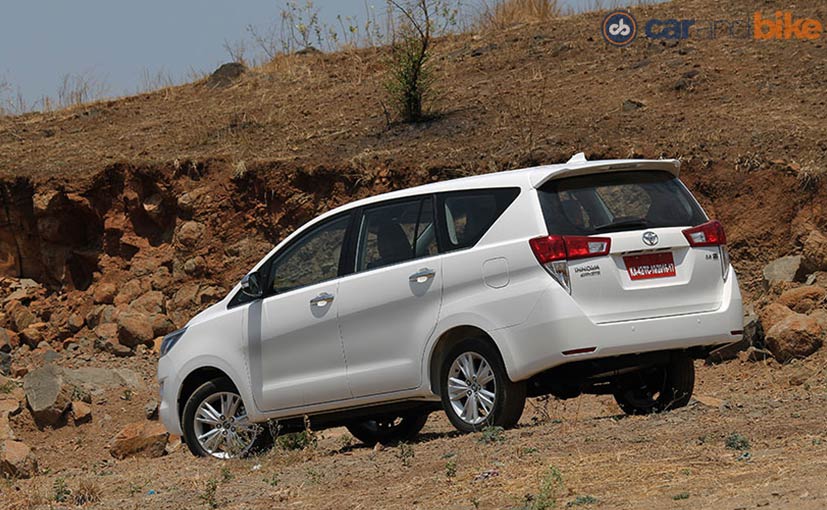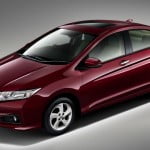
You can see a number of people becoming increasingly health conscious. It’s not about the flat belly; but looking healthy and feeling it too, which is why you see a lot of people going for morning walks or heading towards gyms. The auto industry is no different and when you look at the new-gen Innova, you feel as if Toyota has put it through some laps on the treadmill. It’s been close to a decade now and finally we have the next-generation of the car here. There’s an addition to the name and it’s no longer just the Innova; it’s now called the Innova Crysta.
The Innova carried a big burden on its shoulders, when it replaced the Qualis, which, at that point in time, was the front-runner in the world of MPVs. The Innova proved its worth and soon Toyota had people eating out of their hands and, with the new one, the company’s plans haven’t changed. What has changed though is the look, as we’ve said earlier, the treadmill treatment does wonders to it. With the Innova Crysta, Toyota has taken a big step in the right direction and it’s when you see that frameless front grille and the half a dozen or so slats that run across it, you understand what a distinct character it has got. The nose is larger and the ridge on the bonnet gives it a bit of muscle. The headlamps too give it a dose of ‘modernity’ and the LEDs add a bling to it. There is a bit of chrome, but not a splash of it up front and hence it doesn’t scream premium.
With these changes, the Innova Crysta sheds the typical van-like look up front. It’s more like an SUV and actually looks similar to the Fortuner and that’s why one tends to use terms like rugged and muscular to describe it. Move to the side and that’s where you see the silhouette of the old Innova; but the folks at Toyota have tried every trick in the book to make it look different and not like a van. However, the tapering glasshouse, the muscular fenders and the drooping roofline cannot really hide the MPV dimensions. In fact, the Innova Crysta is longer than its predecessor and yet the kerb weight of the car is just about 1855 kg. So, it still looks bulky, but the boomerang shaped tail lamps that overlap the rear windscreen give it a bit of pizzazz and that really works in its favour.
It’s taken a decade for the company to come out with the 2nd generation of the car and during this time it’s been listening to its customers and trying to understand what they really want out of a car, like the Innova. Is it only styling? Or usability? More Power? Or safety? Well, looking at the finished product, it looks like the change has come in all these departments and when you get to the cabin is when you realise how unlike a van the Innova Crysta has really become.
It’s completely refurbished and there’s nothing in there that you’ll identify with its predecessor. The seats are more comfortable and yes there’s good thigh and lumbar support. The top-of-the-line variant comes with 8-way power adjust seats, which slide, recline and you can alter the height too. The front passenger too gets to play around with the buttons. It’s the dashboard that’s most impressive though, as it sweeps from one side to the other. It’s more like a wave and this looks extremely artistic, as the centre console too blends in beautifully. Well, I was expecting the use of wooden surfaces and the engineers have managed to mix that into the dash pretty well. It doesn’t stand out like the ones in the 2005 Corolla (if you know what I mean), but its use does add to the whole spectacle that Toyota wants you to have inside the car.
The cabin is more like the ones you see in executive cars and it’s far more refined than what we’ve ever seen in an Innova. Yes, the addition of the nametag – ‘Crysta’ – is all about giving that premium look and experience, which its predecessor lacked. It gets a 4.2-inch TFT Multi Information Display, which basically gives you all the information – right from which radio station is playing, to navigation display, Bluetooth and even fuel consumption. There’s also a 7-inch touchscreen system, which comes with a DVD player and this adds to the premium quality of the cabin. There are a few bits, which could have been worked on, like the hard plastic, used on the glove box, which doesn’t really go well with the rest of the well finished cabin. Features like Navigation, a Push Start/Stop button, steering mounted audio controls, cruise control and leather upholstery, all find their way into the Innova Crysta.
But yes, it’s all about the second row, as it comes with captain seats; and the company has taken special interest in moulding this part of the car into a space that is usable and passenger friendly. The door’s inner garnish, in the second row, changes too, as it gets a dash of silver to it (which we don’t see up front). There are about 20 bottle holders all around the car, which ascertains that the company has made use of all the space. There are dedicated AC vents for the second and third row as well.
The wheelbase of the Innova Crysta has not been increased and it still stands at 2750mm. I, a six footer, was extremely comfortable in the rear seat and if I were to be ferried around in the car, I would have been a happy lad. Toyota has also provided foldable seat back tables, which gives you room for a small laptop and a cup holder, something similar to a tray, which we see in aircrafts. The second row has been well thought over and the conveniences for the people seated in there make it an ideal place to be. The third row might seem a little cramped for a person of my size. I could do short distances seated behind, no problem, but for a longer journey, I would jump out at the first chance I got. But the question is, with all these comforts offered, would you want to drive it or be driven in it?
Well, you get to choose from two engine options – the 2.4-litre and the 2.8-litre diesel engines. So, yes, when it’ll be launched, you cannot register one in Delhi. Sad, but true; and Toyota isn’t getting the one with the petrol engine yet. The 2.4-litre GD engine punches out 147bhp and that’s a big leap from the 101bhp, from the 2.5-litre one, in the earlier car, but this one’s only available with a 6-speed manual transmission. The engine is pretty responsive and is at its happiest above 1500 rpm. The 343Nm torque kicks in to provide you that pulling power and you keep on pushing it. The gear throws are long and this makes it a bit tedious to operate. Also, the gear shifter loves to dance around, when in neutral; and then there’s a sense of deja vu, as we’ve seen this in its predecessor. It wiggles around a bit, when in neutral, and you don’t really want that if you’re behind the wheel, which gives you the feeling that you’re driving a large car.
The tyre size too has changed and there are 17-inchers on this one and this means that there is a lot more grip on offer. The suspension set up is on the softer side and the Innova Crysta soaks in all the undulations of the road with ease. You don’t bounce around in the car and even if you cross the three digit mark on the speedo, the passengers inside are calm and collected. It’s only when you drive around the ghat section, do you feel the heaviness of the Innova Crysta? There is some evident roll and this is when you start thinking why the folks at Toyota didn’t think of using a monocoque, rather than a space frame chassis.
On the mileage front, the car returns a decent 15-odd Km/l, which is good for a car that size, but when you call it premium, there needs to be something more on offer. Toyota is bringing in an automatic variant, but it’s available only in the 2.8-litre variant. It is more powerful and churns out a hefty 171bhp, which in turn comes mated to a 6-speed sequential shift gearbox. There is a bit of lag, in the initial few gears, but as the torque kicks in, things start to look good. The Innova Crysta has a strong mid-range and this makes it quite nice to drive both in the city and highway driving conditions. The gearshifts are smooth, but, when you put your foot down on the throttle, the engine growls before settling into a nice little grunt. But the gearbox works well in both the manual and automatic modes and the overall experience is quite a treat. Toyota Innova Crysta Manual and Automatic Gearbox
You can opt for one of the three driving modes – ‘Eco, Normal and Power’ and the gear shifts are altered, according to your preference. Cross the 3500 rpm mark and the engine makes itself audible, with an unmissable groan, but Toyota claims it has worked on NVH levels.
Toyota has packed in a whole bunch of safety features as well, in the top-end ‘Z’ variant and it starts with 7 airbags on offer (driver, front passenger, driver knee, front side and curtain shield airbags). The company will launch the car with three airbags (front driver, front passenger and driver knee), as part of standard equipment and ABS, with EBD as well, which certainly puts a smile on our face.
The Innova Crysta is a huge leap, in terms of design, refinement and even drivability. Mind you, all this comes at a price. Yes, the new-gen Innova will be pricier and this means you’ll have to shell out 15 to 20 per cent more for it. Prices might start at around 12 lakh and go all the way up to the 20 lakh mark and yes you might drop your jaw for a while and wonder if you should shell out that kind of money; but the answer is a simple one- yes, you should. It’s in a different league altogether and it has grown and how. It’s more than a people mover now and that’s what makes it interesting.





